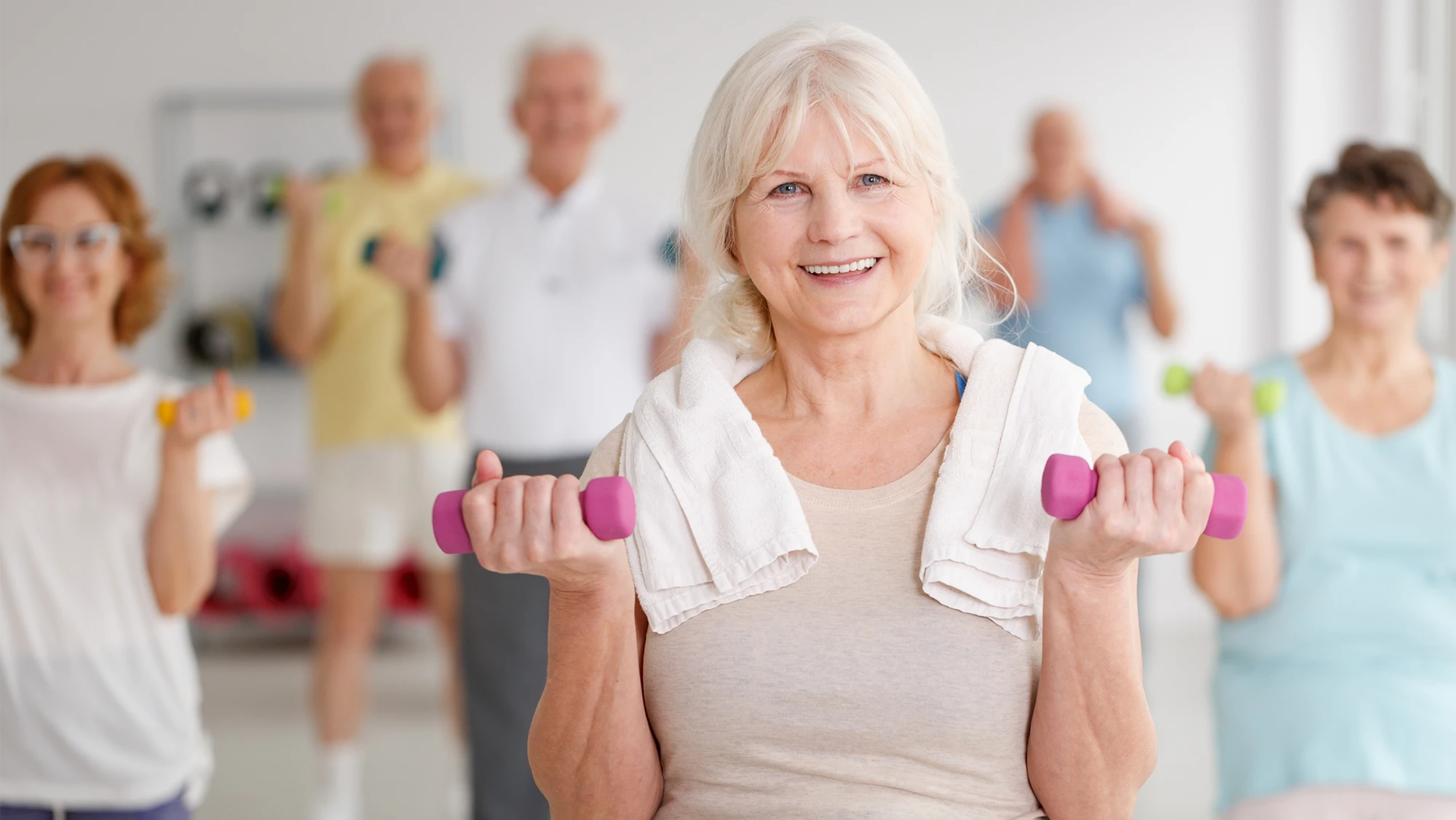Uncategorized
Top Exercise Programs to Keep Seniors Active

Aging should be embraced with strength, mobility, and independence, and staying active is key to achieving that. Engaging in the right exercise programs for seniors helps improve heart health and flexibility, strengthens muscles, enhances balance, and even supports brain function.
The challenge? Finding safe, and effective workouts that cater to an aging body’s needs. In this guide, we’ll explore the seven best exercises for seniors, how much physical activity is recommended, and which workouts should be avoided.
The Health Benefits of Exercise for Older Adults
According to the National Council on Aging (NCOA), regular physical activity can:
- Reduce the risk of chronic diseases such as diabetes, heart disease, and osteoporosis
- Improve mobility, flexibility, and joint health
- Support mental well-being by reducing stress and anxiety
- Strengthen muscles and bones, preventing falls and injuries
How Much Exercise Do Seniors Need?
The Centers for Disease Control and Prevention (CDC) recommends that older adults aim for:
- 150 minutes of moderate-intensity exercise per week (such as brisk walking, 30 minutes a day, 5 days a week)
- OR 75 minutes of vigorous exercise per week (such as jogging or cycling).
- Strength training exercises at least twice a week
- Balance and flexible exercises to reduce the risk of falls.
1. Exercise Promotes Independence
Regular movement helps maintain mobility, allowing seniors to perform daily tasks—like cooking, cleaning, dressing, and walking—with ease. Stronger muscles and flexible joints contribute to a higher quality of life, reducing the need for assistance.
2. Movement Helps Prevent Falls
Falls are a leading cause of injury in seniors, with 1 in 4 adults over 65 falling yearly. Worse, 37% of those falls result in injuries requiring medical treatment. Exercises that enhance balance and coordination, such as Tai Chi and yoga, can significantly reduce fall risks.
3. More Activity = More Energy
Regular exercise enhances mood, boosts energy, strengthens muscles and bones, reduces disease risk, improves brain function, supports sleep, relieves pain, and promotes overall well-being.
4. Exercise Supports Brain and Heart Health
Physical activity enhances cardiovascular function, reducing the risk of heart disease and high blood pressure. It also promotes cognitive health, helping lower the risk of dementia.
The Best Exercises for Seniors
Older adults should focus on low-impact, joint-friendly exercises that enhance strength, flexibility, and balance.
1. Chair Yoga
A gentle form of yoga that improves mobility, balance, and joint health—perfect for those with limited mobility.
- Increases joint flexibility
- Reduces stress and anxiety
- Improves posture and stability
2. Cycling (Stationary or Outdoor)
A low-impact cardio workout that strengthens legs and heart health without straining joints.
- Boosts endurance and stamina
- Strengthens leg and core muscles
- Protects knees and hips from impact
3. Pilates
Pilates is an excellent way to build core strength, improve stability, and enhance flexibility.
- Strengthens abdominal and back muscles
- Improves balance and posture
- Increases mobility and reduce stiffness
4. Strength Training (Light Weights or Resistance Bands)
Strength training helps prevent muscle loss, enhances bone density, and reduces arthritis symptoms.
- Strengthens muscles and bones
- Increases mobility and stability
- Reduces osteoporosis risk
5. Tai Chi
This slow, meditative movement improves balance, coordination, and cognitive function, significantly reducing fall risks.
- Enhances stability and coordination
- Lowers stress and anxiety
- Supports brain and memory health
6. Walking
One of the easiest and most effective ways to stay active. Walking just 30 minutes a day can significantly boost heart health and strengthen muscles.
- Enhances heart and lung function
- Strengthens leg and core
- Improves mood and energy levels
Exercises Seniors Should Avoid
Certain workouts increase the risk of injury and should be replaced with safer alternatives.
- Jumping or High-Impact Aerobics – Puts stress on aging joints.
- Heavy Weightlifting – Can strain muscles and lead to injury.
- Running on Hard Surfaces – Increases knee and hip pain.
- Sit-ups & Crunches – Put stress on the lower back.
- Extreme Flexibility Exercises – Overstretching may result in ligament strain.
Instead, opt for gentle, low-impact alternatives like swimming, Pilates, or walking.
Live Happy and Healthy at Varenita of Westlake
At Varenita of Westlake, we offer specialized wellness programs that empower seniors to live vibrantly. Our community features:
- Personalized fitness routines for strength, flexibility, and balance
- Guided group classes like chair yoga, Tai Chi, and boxing
- Social and recreational activities to keep the mind and body active
By incorporating the right exercises into your routine, you can improve your strength, prevent disease, and maintain independence well into your golden years.
Ready to start your fitness journey? Varenita of Westlake is here to support you!
Top 5 Questions About Senior Exercise Programs
1. How often should seniors exercise?
The CDC recommends 150 minutes of moderate-intensity exercise per week (such as brisk walking, 30 minutes a day, 5 days a week).
2. What’s the best exercise for seniors with arthritis?
Low-impact activities like chair yoga, and Tai Chi help improve mobility and reduce joint pain.
3. Can seniors still do strength training?
Yes! Strength training with light weights or resistance bands helps preserve muscle mass and strengthen bones.
4. What’s a good beginner-friendly exercise for seniors?
Walking is an easy and effective way to stay active while improving heart health and endurance.
5. How can seniors stay motivated to exercise?
Joining a group class, setting small goals, or pairing workouts with social activities makes fitness more enjoyable and sustainable.